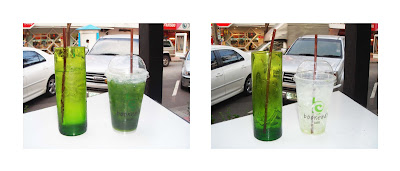

Many times that I do not understand in human nature so, I have doubt about normal of human that abnormal, that why human love to do somethings Inverse and, do that be same as normal by intend and not intend. For example, last week I went out side form my home and, I felt today the weather so very hot then I saw many people ware sun-glasses. In that moment, I did not perceive something till when I went back home that about 10:00 PM was the night time and, I notice that why my house turned on the light but, even everybody already slept. Therefore I realized something at the daytime that when nature give the light to human but, human need to decrease the light by ware sun-glasses. In the same way when in the night time, nature have not give the light but human have need to look for another light that not from the nature. Maybe it is some kind of Inversion case but if we did not observe and realize it so, we will never know that is INVERSE.

Also I have some another example but in this example is different form the first one so in this case maybe somebody intend make it happen than I have just saw it. Last week I have chance to met two friends at the coffee cafe then my friends have to order some beverage but i don't concern about my friend orders and, when we get the orders suddenly I have amazed about the inverse of the liquid color and the containers color so that absolutely inverse. As you can see in the picture so, that make
me question myself why the two kind of containers and two kind of liquid are contain in different color of materials, that maybe is the coffee maker determine. This is another example case of inversion that sometime it happen directly.
Therefore when I have leant some experience more about inverse so,that make me more understand and,make me know that inverse is the same like simulate but the result is very different from the original one. In term of Mathematics we can do the inverse to be original by do the inverse two times so that the result will be exactly the same form the beginning or the original one and,when the result is same form the original that is simulated. Even we do many times of inverse that have only two answers that is simulate and not simulate.

In term of design some architect using the inverse as the principle of there design or using as a keyword. The inverse is just the ideas , that how we think, how we used, how we change, how we different, but actually inverse is just the beginning way to the end as same as transform A to B but, we just know the beginning and the end so, we don't know how to inverse. Because of that have many way to inverse.

It seem like a trace for the trace we just know only the process, and we just know something between A to B but in case of the inverse we already know everything know the beginning, know the process, know the end and, moreover know how go back to the beginning. If compare in human being the principle of inverse as I mentioned so, A ( beginning point ) seem like the past that we already know everything happened and the process of inverting seem like a present so, that we struggle for better way to find the solution and, B ( ending point ) seem like the future that sometime we know the answer or sometime we never know so, it depend on nowadays how we inverse ?













